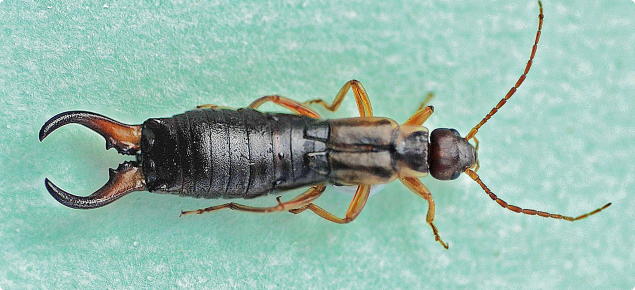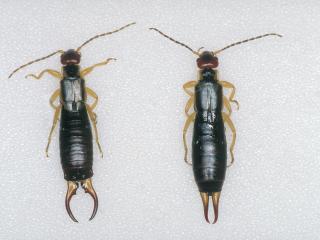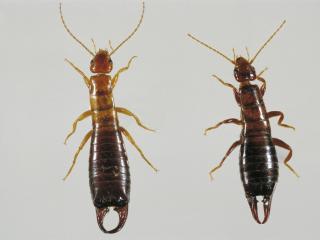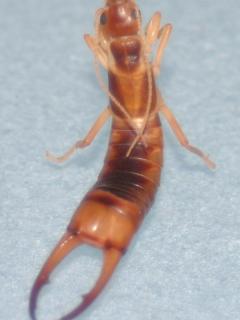Description
European earwigs
- Adult European earwigs range from 12-24mm long.
- European earwigs have uniform brown bodies that are smooth and shiny with light brown/ yellow legs, pincers (also called forceps) and 'shoulders'.
- These earwigs have a flattened, elongated body with a reddish brown head and slender, beaded antennae.
- Pincers of male earwigs are long and curved while those of females are almost straight.
- Young earwigs, also called nymphs, look similar to adults but are smaller, paler and do not have wings.
Native earwigs
Native earwigs are widespread and feed mainly on leaf litter and other organic material and are not known to damage crops.
They are often solitary and will not be seen in the high numbers usually associated with pest populations of European earwigs.
There are two species commonly confused with European earwigs:
Carcinophora occidentalis (no common name)
- Have reddish brown foreparts and legs with a darker abdomen and pincers.
Labidura truncata (common brown earwig)
- Has similar colouring to European earwig.
- Can be distinguished from European earwig by presence of orange triangle behind the head on the wing case.





